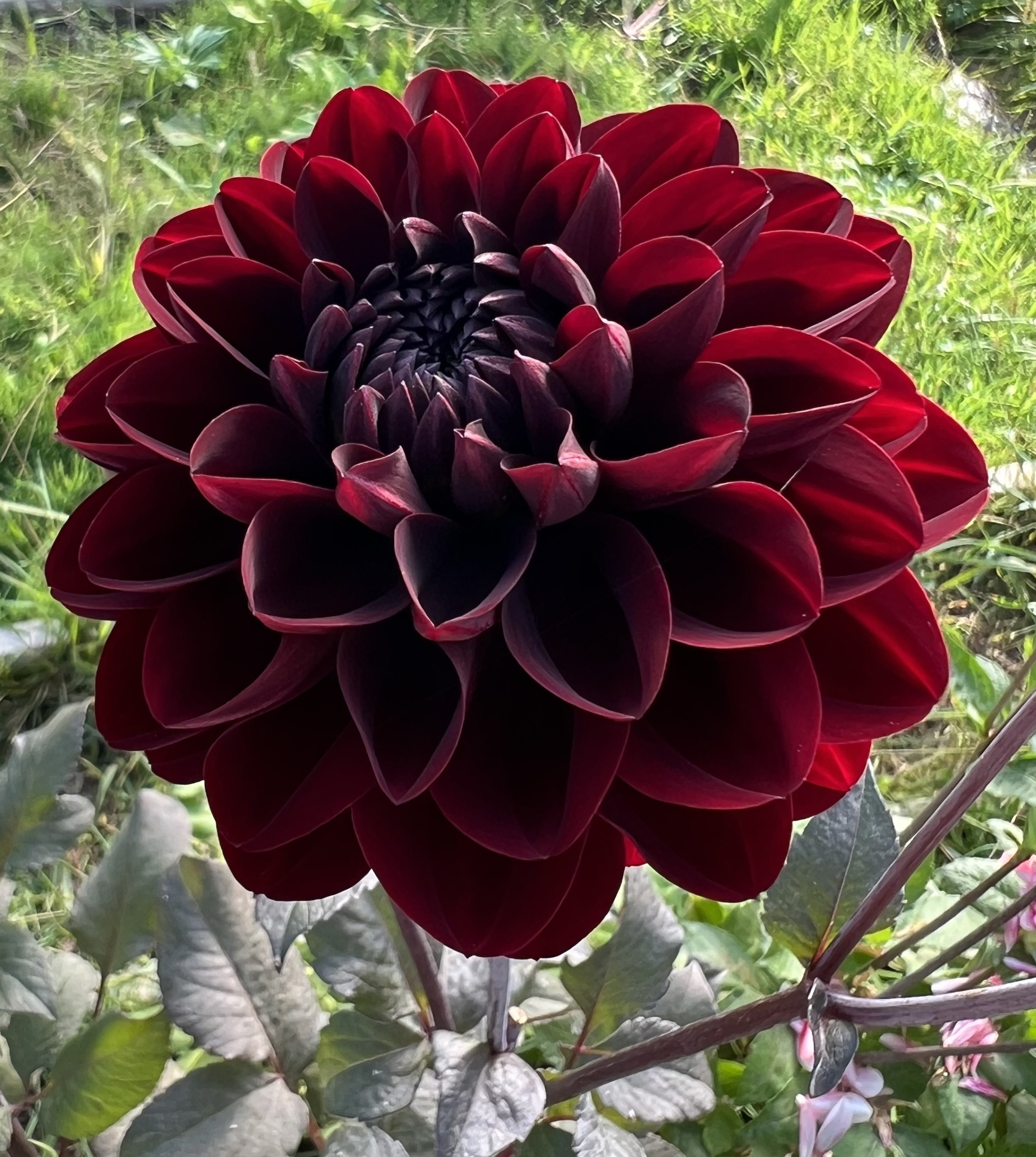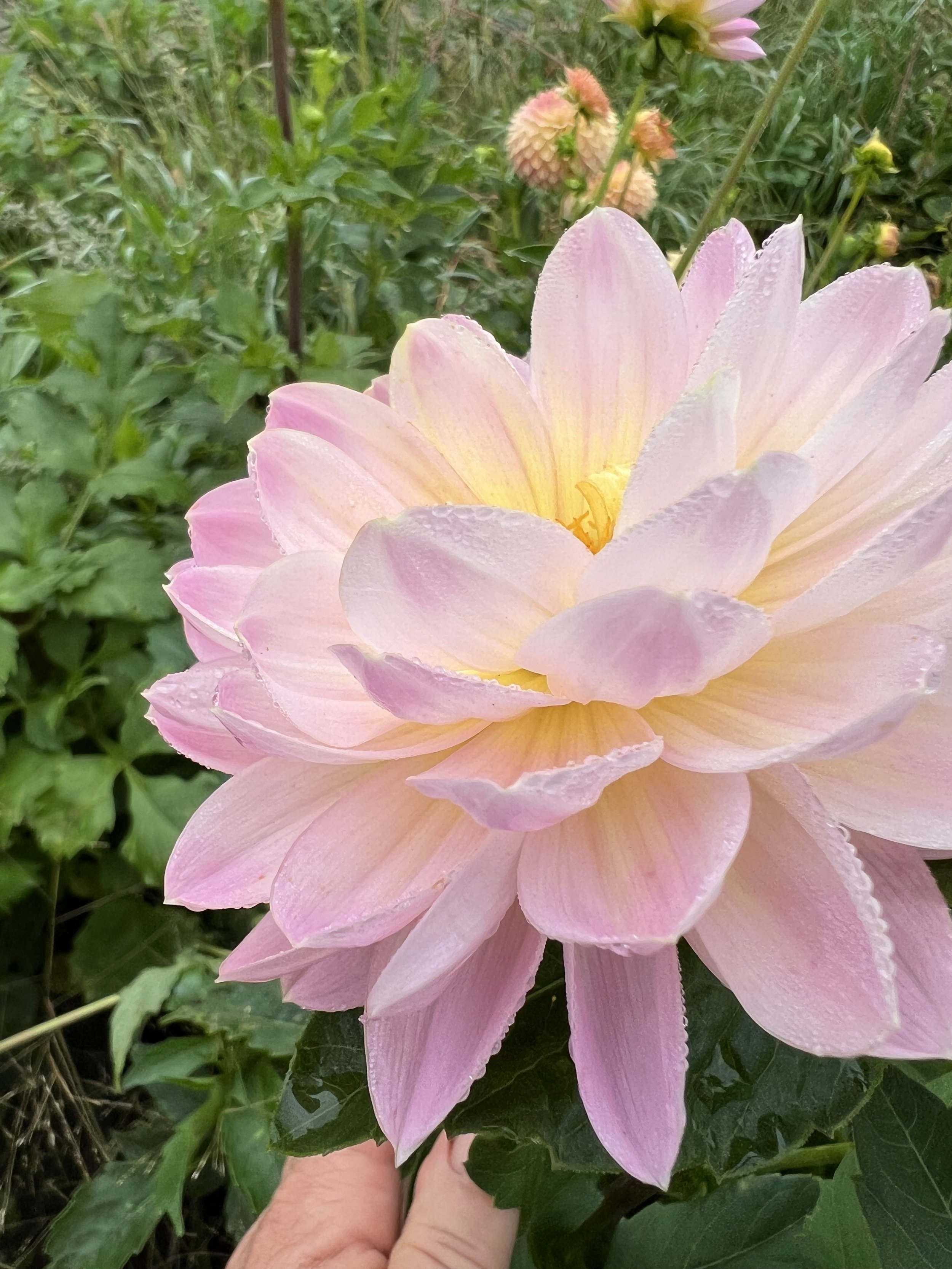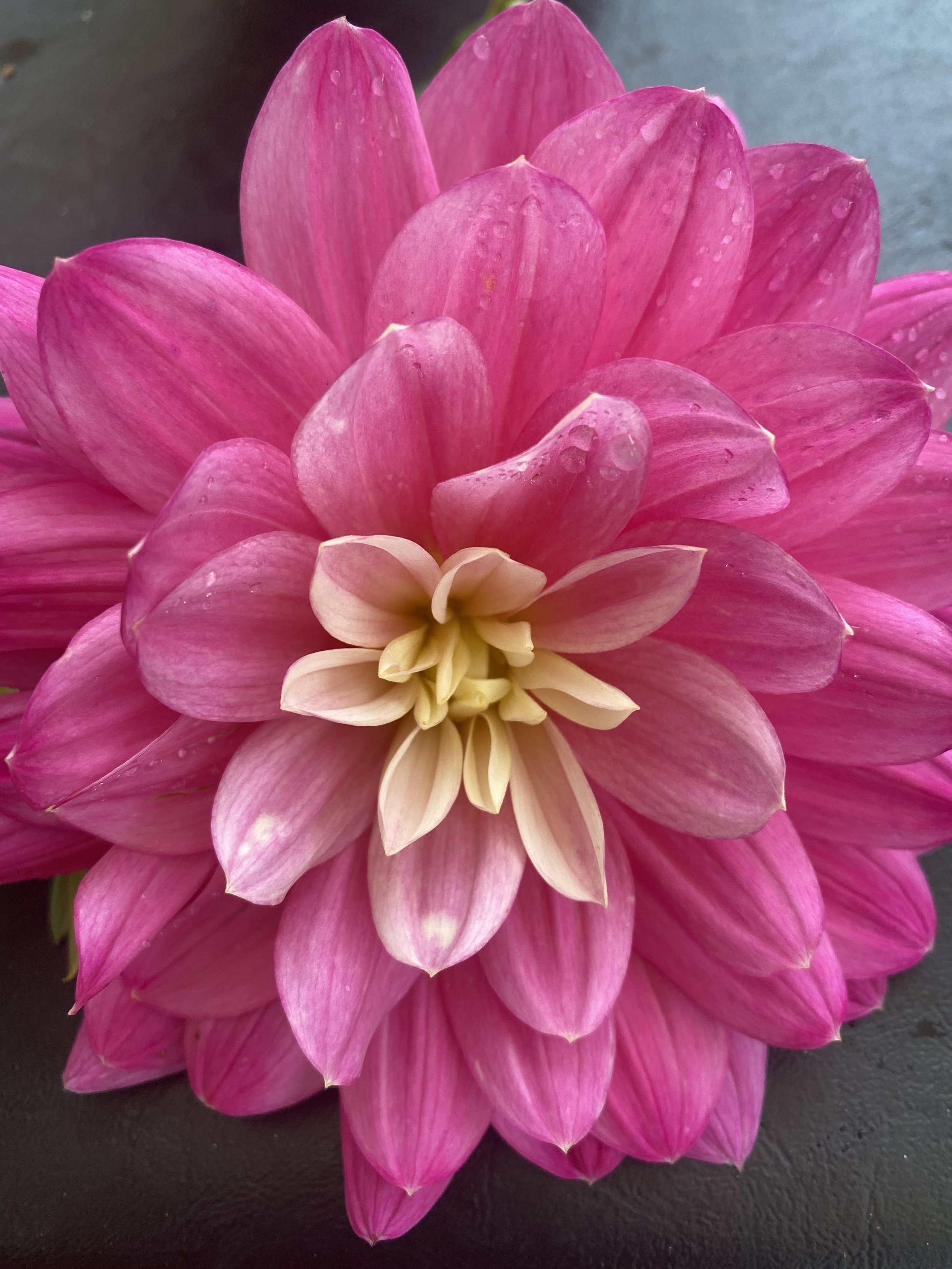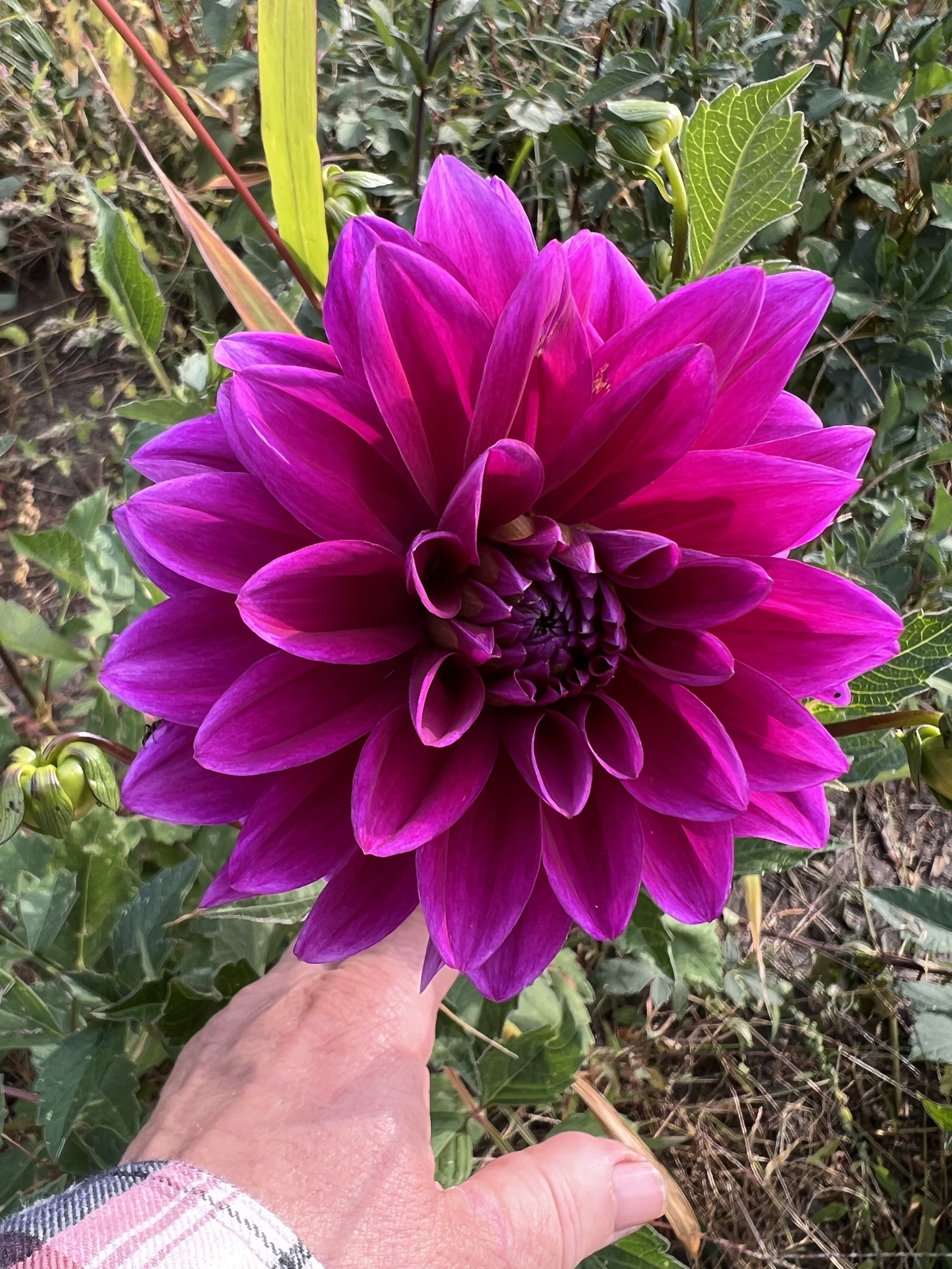Dahlias - #1 The Basics
Dahlias are amazing Garden plants, not just as cut flowers. If you are looking for a fabulous summer filler plant for your mostly Spring garden (like I did), Dahlias are perfect. Back in 2014, when when I started growing Dahlias, I was given 4 tubers to plant out in my Spring garden. I plopped them in where there were large blank spots. I couldn’t believe how quickly the dahlias grew and filled in the holes, and this was early July! Then they started blooming, and all was more or less forgiven when it came to having to dig them out in the Fall.
Now in 2014, Dahlias used to start blooming in Early to Mid July in Zone 5, not like now, due to climate change. It is more likely early August before blooms appear. Dahlias don’t like excessive heat, so they go almost dormant and slow down growth, and bloom as the days become slightly cooler.
Needless to say I jumped into Dahlia growing with both feet. I am by no means an expert but I do know how to find additional information on the subject of my addiction and the references follow at the end. I have banked a lot of experience since my first tubers.
Dahlias are grown mainly from tubers (like a potato). The Tuber is a clone of the Dahlia. Dahlias can also be grown from cuttings which produces a clone of the original plant. The final method of growing Dahlias are from seeds, a method growing in its popularity. Dahla seeds pollinated by hand or by pollinators produce a whole new variety of dahlia and never a clone. This is how new varieties come to be. Any of these propagation methods can be done by anyone, with a few rules and consideration. Just think of the various shapes, sizes and colours that dahlias come in, it is a smorgasbord!
The Different categories or Nomenclature of Dahlias is a good place to start. The American Dahlia Society has guidelines which help determine accurate descriptions of each of each variety.
Dahlia Sizes: AA - Giant 10+ inches across
A - Large 8-10 inches
B - Medium 6-8 inches
BB - Small 4-6 inches
M - Minature up to 4 inches
P - Pompon up to 2 inches
Ball - up to 3.5 inches
Ball - 2-3.5 inches
Dahlia Colours: White, Yellow, Orange, Pink, Dk. Pink, Red, Dk Red, Lavender, Purple, Bronze, Flame, Dark blend, Variegated and Bicolour (two distinct and separated colours)
Dahlia Forms:
Formal Decorative - FD - Florets are flat and partially revolute or involute, uniform, and arranged regularly.
Informal Decorative - ID - Ray Florets are twisted or curled creating an effect of not being flat, and irregular.
Semi Cactus - SC - Ray Florets are incurved for up to one half of three length.
Cactus - C - Ray Florets are revolute for more than half of their length, and may be pointed , radiating in all directions from the centre of the flower head.
Incurved cactus - IC - Ray Florets are revolute for more than half their length with a pronounced curvature toward the centre of the flower head.
Lacinated - L - Split or lacination of the in proportion of the length of the Ray Floret with overall twisting in the area of the split to give an overall fringed effect.
Ball - B - fully double, ball shaped or slightly flattened at the face. Ray Florets are blunt, round, or indented, involute for half the length in a spray arrangement.
Mini Ball - MB - same as Ball only smaller.
Pompon -P - fully double but globular and smaller. Ray Florets are involute the whole length.
Stellar - ST - Fully double, immature to mature the outerflorets are narrow and involute with a slight curve to the Stem.Depth of the Stellar should be 1/2 to 1/3 the diameter. the greater depth being ideal.
Waterlily - W - Fully double and symmetrical blooms with a sideview that appears to be flat or saucer shaped. Ray Florets are open faced. the centre is closed and dome shaped.
Peony - P - Open CentredDahlia with two or more rows of Ray Florets surrounding the disc flowers (centre). Ray Florets adjacent to the centre may be smaller
Anemone - A - One or more rows of Ray Florets surrounding a centre of elongated tubular disc florets, producing a pincushion effect.
Collarette - Open face with a single row of uniform evenly spaced Ray Flores in a flat plane. Petaloids that surround disc are less than half of the legthof the Ray Florets.
Single - Open faced row of uniform evenly spaced Ray Florets in a flat plane surrounding the disc flowers.
Orchid - O - Single row of evenly spaced involute Ray Florets. Involute for 2/3 or more of Ray Florets length and fully involute for at least 1/3 of the length.
Orchette - Combination of Orchid and Collarette
Novelty - Novelty dahlias are different from the present.
As you can see it is a pretty diverse group of flowers, making them a collectors dream, as well as a workhorse of the Fall Garden. Only pit fall in my climate is the necessity to dig up in the Fall and store them until Spring. Our winter temps used to be consistently making down to -40 C and F, but now it is about -24C or -8F (2025).
When you are buying and collecting Dahlias bear in mind that not all dahlias are ‘easy keepers’ or ‘big tuber producers”. Those hard to find varieties are a red flag for difficult to maintain. Some are major producers of blooms and tubers. This is why many growers offer up cuttings of those hard to find varieties, and the price usually reflects difficulty in keeping cuttings going over Winter, as a means of maintaining that variety for future years. Then you have to weigh beauty over Work Level! I also admit finding them, loving them, and then wondering were they worth the extra work to maintain them, or the colour wasn't anything like photos suggested. In fact it is why I don”t touch up photos - that is the colour. Except for Red ones - they are never as good as the real thing.
When I started out I was a bit of a dinner plate Dahlia collector because they were so big and unusual. Then I started flower Farming and realized they were a novelty item, but despite that I have a wee spot in the garden for some.
FD - Manoa
Kelgai Ann - Waterlily
The Gallery from Left to Right
Teesbrooke Audrey - Collarette
Henriette - Semi Cactus
Hollyhill Pink Martini - Waterlily
Sandia Brocade - Anemone
Hollyhill Jitterbug - Semi Cactus
Thomas Edison - Formal Decorative
Cafe Au Lait - Informal Decorative
Normandy Bright Day - Informal Decorative
Hollyhill Pinkie - Lacinated
Joey Winnie - Ball
Brown Sugar - Ball
Honka - Orchid
Verrone’s Obsidian - Orchid
References and Additional Reading
ADS - American Dahlia Society
CCDS - Canadian Chrysanthemum and Dahlia Society
Dahlias - Seed to Bloom, Authors Kristine Albrecht & Brian Sprinsock
Dahlia Breeding for Farmer Florist and Home Gardener, Authors Kristine Albrecht & Brian Sprinsock
Floret Farm’s Discovering Dahlias, Author Erin Benzakein














